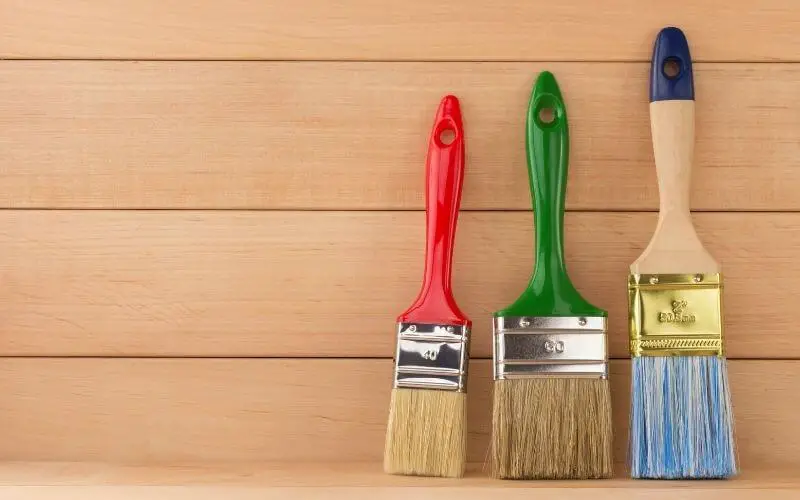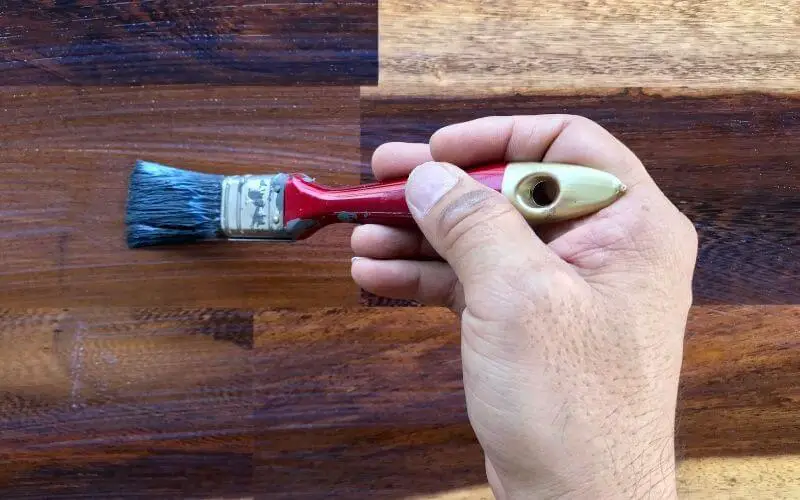There are two types of polyurethane; Oil and water-based polyurethane. Both types provide a hard, clear coating to protect wood flooring, walls, and furniture. Yes, after staining or painting your hardwood floor, you need polyurethane to preserve and protect the stain.
This post will give you a comprehensive rundown on how to fix uneven polyurethane finish on the floor and other problems when applying polyurethane.
Ideally, using polyurethane to coat your floor is quite straightforward. Normally, about two coats of liquid are enough to give your floor the perfect finish. Applied polyurethane unevenly? All you need to do is sand the uneven finish using fine-grit sandpaper and apply a fresh coat of polyurethane.
Read: How to fix uneven stain on hardwood floor
What Causes Uneven Polyurethane Finish?
Table of Contents
Admittedly, getting an even polyurethane finish on your hardwood might not exactly be an easy task for you, especially if you’re not conversant with home improvement projects.
However, an even polyurethane finish might be as a result of the following reasons:
- Contaminated polyurethane
- Insufficient mixing
- Uneven application of polyurethane finish
- Improper sanding and cleaning the surface
Read: How to refinish parquet flooring
How to Fix Uneven Polyurethane Finish on Floor
Fortunately, there is quite a straightforward to fix or resolve uneven polyurethane finish on your floor.
But firstly, you will need the following:
Utility knife
- Handheld Rotary tool with 220-grit sanding disks
- Clean cloths
- Polyurethane
- Paintbrushes
- Safety goggles
- Respirator mask
Procedure
1. Using a handheld Rotary tool with 220-grit sanding disks, gently sand the areas with an uneven finish. Make sure you don’t sand too hard so you don’t cut through the stain; this will require you re-stain the area; you don’t want that extra task.
2. Use a clean cloth to wipe away sandpaper, dust, and debris from the area. Ensure that the sanded area is spotless; you don’t want specks of dust or debris trap in the new coat of polyurethane.
3. Using a clean paintbrush, apply a fresh, light coat of polyurethane to the sanded area. Give it some time to dry, then check if the new coat is even. If it’s not, you will have to repeat the process all over again. Also, if you applied a thick coat of polyurethane instead of light coats, you will have to sand and repeat the process.
4. Throughout this procedure, make sure you are wearing safety goggles and a respiratory mask, especially if you’re sensitive or asthmatic.
Read: How to sand floor with hand belt sander
Other Polyurethane Mistakes and Issues
While we have conveniently covered the issue of uneven polyurethane finish, there are other issues that occur when applying polyurethane on your hardwood floor. Here’s a rundown of some of these issues:
1. Bubbles in Polyurethane Finish
Various reasons cause this error ranging from shaking the polyurethane before use and wiping the brush with the side of the polyurethane can.
When this is done, air bubbles become trapped in the process resulting in bubbles in the polyurethane finish? This can easily be resolved by cleaning the surface with bubbles and applying a fresh thin polyurethane coat.
2. Discoloration of Polyurethane
Have you noticed that your fresh coat of polyurethane on your floor turns yellow over time? While this is regarded as a natural process, it can easily be resolved by sanding the affected area and applying a fresh coat of polyurethane over it.
3. Orange Peel Effect
The orange peel effect of polyurethane finish happens when you use a roller instead of using a brush to apply polyurethane. Because rollers are not usually nabbed properly, you tend to get an orange peel color on your floor after application.
This issue can easily be avoided by using a clean paintbrush instead of a roller. The orange peel effect can be resolved by sanding the whole affected area and applying new coats of polyurethane.
Also, extreme temperature while painting can result in the orange peel effect. Thus, always paint at an average temperature level.
Read: How to remove polyurethane from wood
Conclusion
After staining or painting your floor, you definitely need coats of polyurethane to protect, preserve and keep your floor sparkling. These attributes can be achieved with both oil and water-based polyurethane.
If you made some mistakes that result in an uneven polyurethane finish, then you should be interested in how to fix uneven polyurethane finish on floor. By sanding and reapplying fresh coats of polyurethane, the problem can easily be resolved.

